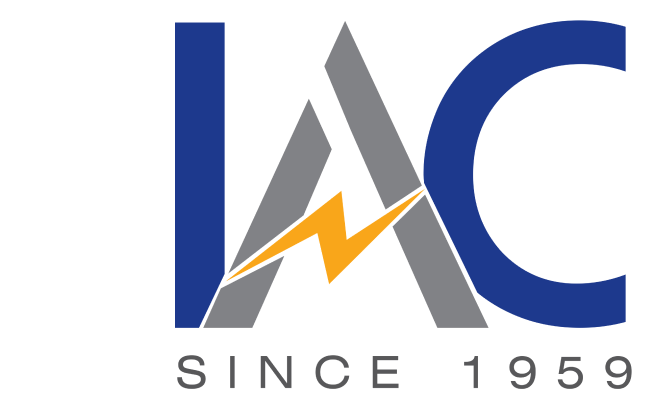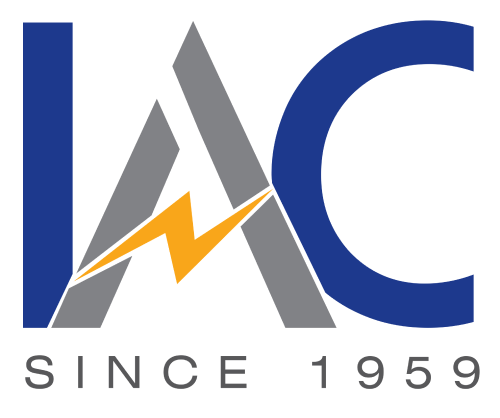Transmission networks are the backbone of modern power systems. Many factors affect the reliability, efficiency, and safety of the system, and an important element is the type of insulators used in power transmission systems. Insulation is important for the proper conduction of electricity, which can minimize current leakage and prevent short circuits to avoid any safety hazards. They are applied to low-voltage power distribution systems and ultra-high voltage transmission lines.
Here, we review some additional uses of insulators and their importance in the transmission of electricity. For the best insulators, visit the premier insulator manufacturer, IAC Electricals.
Importance of Insulators in Power Transmission Systems
In an electric power system, insulators are like policemen. They prevent traffic from flowing to unwanted paths, such as towers or poles. Power lines transmit high voltages so that any leakage can result in outages, equipment damage, or serious accidents. Electrical insulation is a barrier to the flow of electricity and static electricity.
Insulation can make electricity distribution systems unsafe as well as impractical. These applications make them important assets, although they suffer from problems such as water and weather resistance, as well as electromagnetism and vibration wear and tear.
Applications of Insulators in Power Transmission Systems
The following are the key Insulators used in power lines and underline the importance of Insulators:
Supporting Conductors
The most well-known use of electrical insulators is to permit the separation of electrically charged particles. Insulators attach the power lines with a tight grip to poles and towers, preventing the conductors from touching their supports. This provides both safety and efficiency in power supply systems.
Preventing Current Leakage
Among other things, insulators in power transmission systems serve the primary purpose of preventing current from leaking to the earth or substations. They work to maintain an open pathway for energy transfer and create a good dielectric barrier to prevent energy losses, ensuring the power reaches its intended destination.
Withstanding High Voltage Levels
Transmission systems usually operate at extremely high voltages in such voltage systems. These values can be supported with electrical insulators without any failure. At low-, medium-, and extra-high-voltage lines, electrical insulators ensure how the line functions and that no hazardous discharges occur.
Providing Safety for Maintenance Teams
Preventing accidents is another goal in electric networks. Insulators used in power transmission systems provide the necessary isolation to protect engineers and others from potential hazards during maintenance and repair operations. They would avoid accidental shocks and keep the working space safer when crews repair or upgrade the system.
Separation of Conductors
In multi-phase power delivery systems, separating the conductors is necessary to avoid short circuits. Insulators serve as spacers to keep wires separate, even in high winds and during storms. This is to maintain a high level of availability and avoid failures.
Improving Efficiency of Transmission Lines
Insulation in power transmission helps prevent leakage and keeps the system intact, allowing for the highest efficiency possible. They reduce energy waste, require less maintenance, help you avoid costly electrical infrastructure upgrades, and qualify for a variety of federal and local rebates. These benefits also come with high-quality electric insulators through reputable manufacturers such as IAC Electricals.
Resistance Against Environmental Conditions
Transmission line structures must withstand harsh weather conditions, including rain, snow, dust, and high temperatures. Their components—porcelain, glass, and composite polymers—are designed to withstand environmental stress without compromising electrical strength.
Protecting Against Flashovers
IAC Electricals is a dominant force in the utilities and power sector, with aspirations to be the best in the world both domestically and internationally. Specially designed electrical insulators will help prevent flashovers in power transmission systems, thereby ensuring a continuous supply of electric power and saving expensive components from damage.
Types of Insulators Used in Power Transmission Systems
To satisfy their applications, the insulators of the power transmission systems are categorized into:
- Pin Type Insulators: Used in low- to medium-voltage applications.
- Suspension Insulators: Suitable for high-voltage lines that require both flexibility and strength.
- Tensioners: For help in handling mechanical tension on runs of longer conductors.
Why Choose IAC Electricals for Insulators?
IAC Electricals is a trusted name in insulators. Our systems are constructed from some of the most cutting-edge materials available, ensuring precise performance and reliability. IAC Electricals is a dominant force in the utilities and power sector, with aspirations to be the best in the world both domestically and internationally.
Conclusion
The importance of insulators in power systems cannot be overemphasized. Not only do they provide security and reliability to electrical power systems, but they also enhance the efficiency of the entire system. From assisting conductors to preventing leakage and offering strong resistance to high voltages, they are essential in today’s energy infrastructures. When you select quality products from IAC Electricals, your industry and utilities are assured of safe, long-term performance and value for money.
FAQs:
Q1. Which material insulators are commonly used in transmission lines?
A1. The insulators used (pin, suspension, strain, and shackle) also vary according to the voltage and mechanical load levels.
Q2. What are the functions of insulators in increasing the efficiency of the transmission system?
A2. Insulating materials are used to prevent current leakage, dissipate power, and support large components. They combine forces to build systems with low losses that are resistant to damage, enabling the safe and free transmission of power, which becomes increasingly less costly to maintain as is, and that comfortably minimizes power losses.






